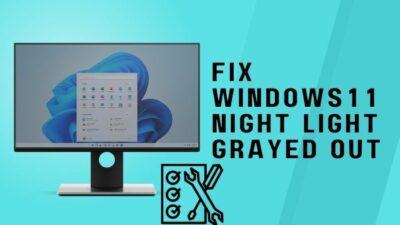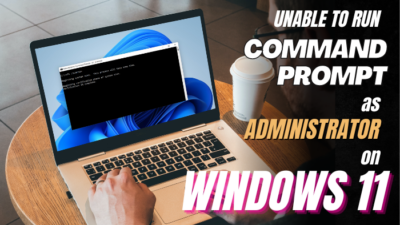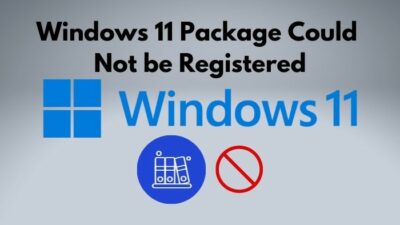Windows 11 brought some remarkable features to action, but those features are not as perfect as I imagined them to be.
For the past week, I’ve had issues trying to get the snap layouts of Windows 11 to work correctly. If you are in the same situation, keep reading to find out how I solved it.
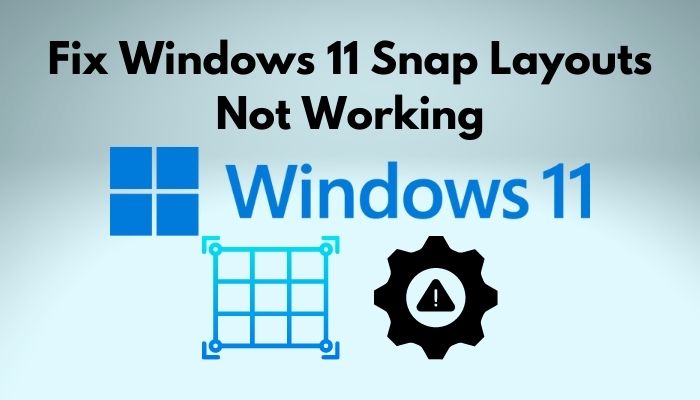
Why is snap windows not working?
I went through more than fifty different blogs and guides only to find some of the fixes didn’t even work. So, I tried fixing it myself, and I was successful. Don’t worry, I will only tell you about the fixes that are 100% confirmed to work, so you don’t waste any of your precious time.
So, grab some refreshments and keep your computer close so we can get started.
How to Fix Windows 11 Snap Layouts not Working
The first step before trying any of the fixes is to do some basic troubleshooting like restarting your computer or closing and reopening the file explorer window. Once you have confirmed that your issue is still present, you can start applying these fixes.
It is also important to note that if the problem you are facing involves explicitly getting fewer layout options, that’s a limitation due to your monitor or tablet’s resolution, so these fixes won’t help.
Here are the methods to fix Windows 11 snap layouts not working:
1. Turn On Snap Layouts Manually
Before you start blaming Windows for these issues, you should make sure that the feature is actually enabled in Windows settings. Typically, this should be turned on by default, but a program or an update could have turned it off unintentionally.
Follow these steps to turn on snap layouts in Windows 11:
- Use the ‘Windows key + I’ shortcut to open Settings or do a right-click on the Start icon and select ‘Settings’.

- Switch to the System tab if you are not already on it.

- Scroll down until you see the Multitasking option and click it.

- Switch on the toggle next to Snap windows to enable snap layouts.
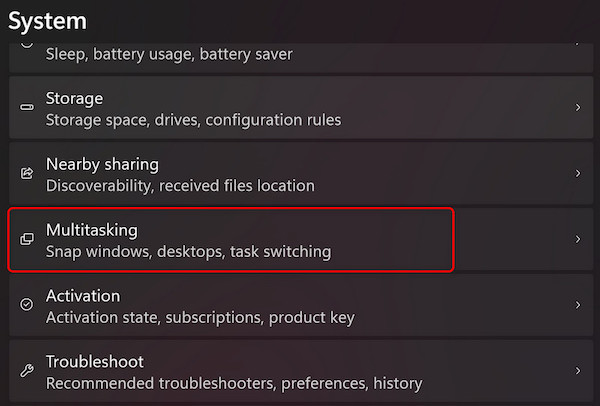
If the toggle was already on or you are still getting snap issues, try editing registry values to turn on snap layouts.
Also, check our exclusive tutorial on How to Fix Blue Screen on Windows 11.
Here are the steps to turn on snap layouts with Registry editor:
- Launch the Start menu, search for ‘regedit’ and click on the first match.

- Copy the following address to your clipboard by selecting it and pressing ‘Ctrl+C’ on your keyboard.
Computer\HKEY_CURRENT_USER\Software\Microsoft\Windows\CurrentVersion\Explorer\Advanced
- Go to the Registry editor window, right-click on the text box right below the menu, select Paste, and then hit Enter on your keyboard.
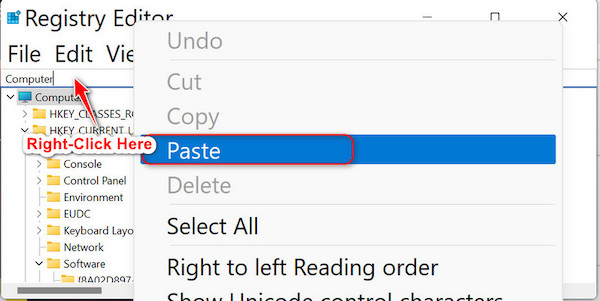
- Locate the ‘EnableSnapAssistFlyout’ registry. If you can’t find it, create a new registry of that name by right-clicking on an empty space and clicking on New followed by DWORD (32bit) value.

- After double-clicking on ‘EnableSnapAssistFlyout’ registry, switch the base to Hexadecimal, change the Value data to 1 and click OK.
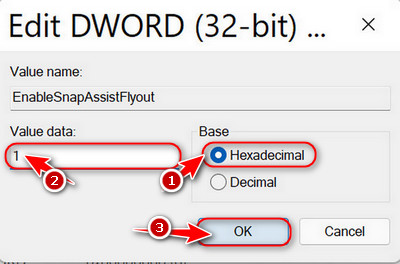
- Snap layouts should be enabled now when you hover your mouse above the square icon next to X at the top right corner of an explorer window.
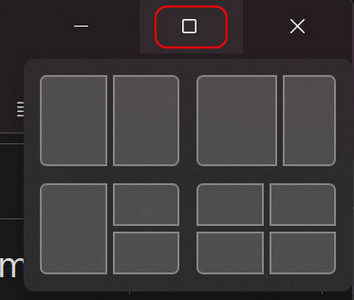
Quickly check out how to disable SuperFetch on Windows 11.
2. Enable Snap Layout Compatibility for Firefox
If you did the previous step and the Firefox app still won’t snap, it’s because some Firefox versions require you to tweak a setting to snap the browser window.
Newer versions automatically enable this, but if you need to enable snap layout right away, follow these steps:
- Launch the Firefox browser.
- Locate an empty area on your Firefox toolbar and click on ‘Customize Toolbar’ from the list. You right-clicked on the address bar or somewhere else if you don’t see it. Try right-clicking somewhere close to the reload icon on the top left.
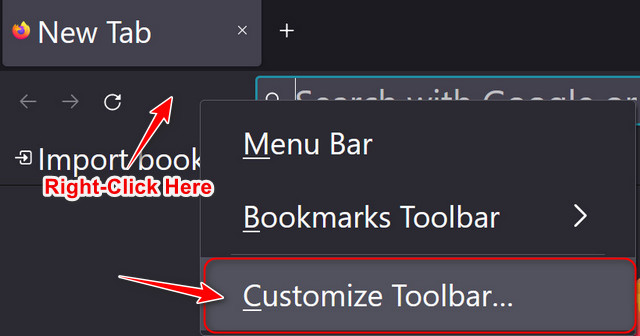
- Click on the check box next to Title Bar at the bottom of the window to make sure it’s checked, and click on the blue Done button.
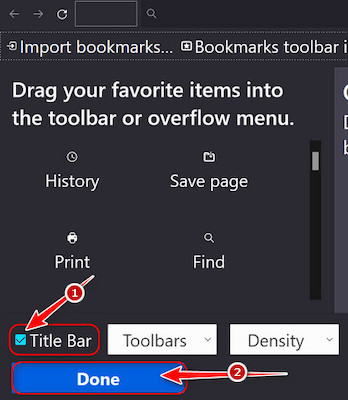
- After relaunching Firefox, the snap layout issue should be gone for good.
Do check our latest post on the Show Folder Size in Windows 11.
3. Snap Using Keyboard Shortcuts
After you have enabled the Snap layouts with the previous two methods, it’s most likely a software or feature issue if you are still facing problems. In this case, you can try using one of the two keyboard combinations to activate the feature forcefully.
Here are the two keyboard shortcuts to activate snap layouts:
- Press the Windows key and Z on your keyboard simultaneously to view the several snap options. Click on any layout to snap the current window to that.
- Press the Windows key and a single arrow key simultaneously to snap the current window quickly. The window will snap in the direction of the arrow key you pressed. For example, pressing Windows + upward arrow will snap the window to the top.
4. Verify App Compatibility
Since Windows 11 was released recently, there are still a lot of apps that are not optimized for it properly. Because of that, some features like Snap layouts don’t work correctly with certain apps.
You can verify whether the app is incompatible by checking to see if Snap layouts are working correctly for other default apps like File Explorer. If it’s working for them, it means the app is incompatible.
It would be best to wait for the app developer to optimize their app to use the snap layout feature for that app. However, if you are facing problems with File Explorer, move on to the next fix.
Check out our expert-recommended guide on How To Enable Telnet On Windows 11.
5. Check If Windows Is Up-To-Date
Your Windows build is probably buggy if you have come this far and still were unable to get results. The perfect solution to this is to upgrade the build if an update is available.
If you don’t know how to check for updates, follow these steps:
- Launch the Settings app from the Start menu or by simply pressing ‘Windows key + I’ simultaneously.
- Switch to the ‘Windows Update’ tab from the left panel.
- Click on the Check for updates button on the top right corner and download the latest update if it’s available. Move on to the next fix if there are no updates.
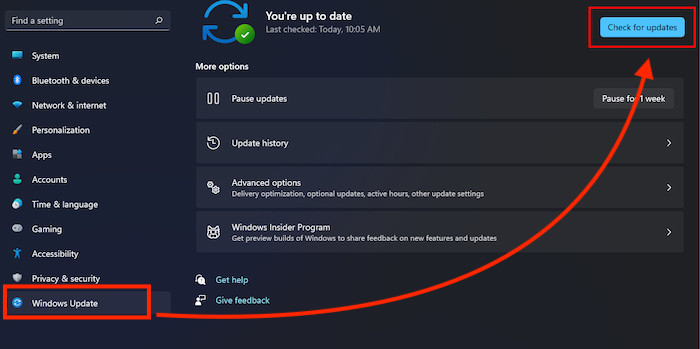
6. Uninstall Third-Party Windows Customization Apps
Windows is one of the few operating systems out there that you can customize with a lot of freedom. However, some apps that do this interfere with some functionality without any intention.
The apps that are known to cause issues with Snap layouts specifically include Microsoft PowerToys, Divvy, AquaSnap, and other similar apps.
I recommend removing all the customization apps you have installed since you can always install them again if it didn’t work.
7. Clean Install Windows 11
After trying out all the six methods I mentioned previously if you are still stuck with the same issue, I can confidently say that the Windows build you are currently using is corrupted or buggy.
The only way to fix it is to install Windows 11 again from scratch. This might remove your personal files, so make sure to keep a backup. I recommend installing Windows 11 using the Microsoft website’s official Windows 11 installation assistant.
There is a complete step-by-step article on this already on this website, so check that out for more details.
You may also like to read: Stop Apps Running in Background Windows 11.
FAQ
How do I get the snap layout on Windows 10?
You can get a snap layout on Windows 10 using the PowerToys app. This app was developed by Microsoft and it’s completely free to use. It can enable a feature called FancyZones, and the best part is you can also use it on Windows 11.
How do I use snap assist in Windows 10?
You can use snap assist in Windows 10 by simply dragging the window to the far left or far right and releasing the click when it’s at the border. It works the same way in Windows 11. However, Windows 11 has predefined layouts which don’t exist on Windows 10.
Final Thoughts
I don’t know about you, but the feature that caught my eye from Windows 11 was Snap layouts, so it came as a shock to me when I couldn’t get it to work correctly. Thankfully, it wasn’t too complicated to fix the problem.
I hope one of my fixes did the trick, and do leave any queries in the comments below.


